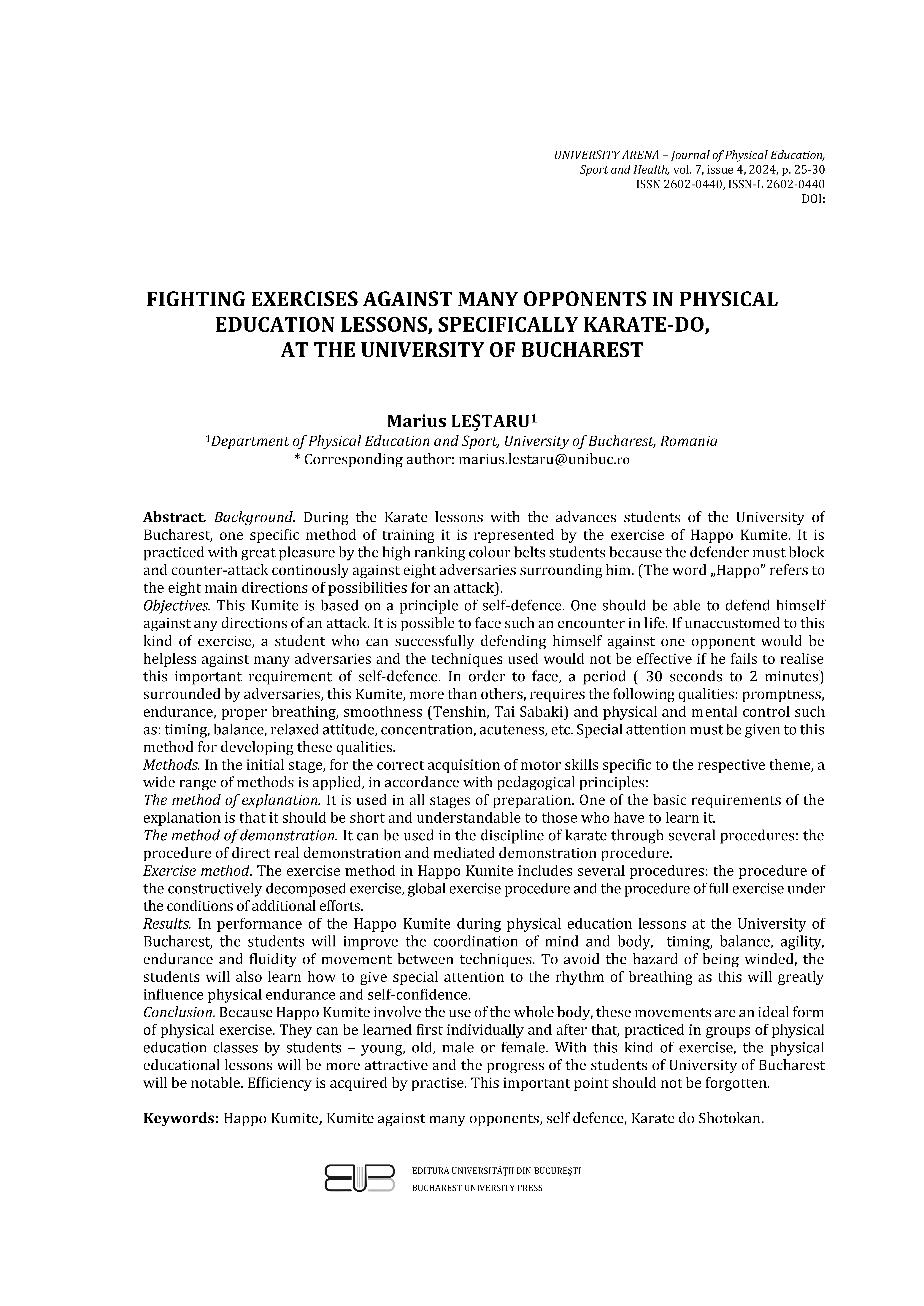FIGHTING EXERCISES AGAINST MANY OPPONENTS IN PHYSICAL EDUCATION LESSONS, SPECIFICALLY KARATE-DO, AT THE UNIVERSITY OF BUCHAREST
DOI:
https://doi.org/10.62229/UaVii_4_24-4Keywords:
Happo Kumite, Kumite against many opponents, self defence, Karate do ShotokanAbstract
Background. During the Karate lessons with the advances students of the University of Bucharest, one specific method of training it is represented by the exercise of Happo Kumite. It is practiced with great pleasure by the high ranking colour belts students because the defender must block and counter-attack continously against eight adversaries surrounding him. (The word „Happo” refers to the eight main directions of possibilities for an attack).
Objectives. This Kumite is based on a principle of self-defence. One should be able to defend himself against any directions of an attack. It is possible to face such an encounter in life. If unaccustomed to this kind of exercise, a student who can successfully defending himself against one opponent would be helpless against many adversaries and the techniques used would not be effective if he fails to realise this important requirement of self-defence. In order to face, a period ( 30 seconds to 2 minutes) surrounded by adversaries, this Kumite, more than others, requires the following qualities: promptness, endurance, proper breathing, smoothness (Tenshin, Tai Sabaki) and physical and mental control such as: timing, balance, relaxed attitude, concentration, acuteness, etc. Special attention must be given to this method for developing these qualities.
Methods. In the initial stage, for the correct acquisition of motor skills specific to the respective theme, a wide range of methods is applied, in accordance with pedagogical principles: The method of explanation. It is used in all stages of preparation. One of the basic requirements of the explanation is that it should be short and understandable to those who have to learn it. The method of demonstration. It can be used in the discipline of karate through several procedures: the procedure of direct real demonstration and mediated demonstration procedure. Exercise method. The exercise method in Happo Kumite includes several procedures: the procedure of the constructively decomposed exercise, global exercise procedure and the procedure of full exercise under the conditions of additional efforts.
Results. In performance of the Happo Kumite during physical education lessons at the University of Bucharest, the students will improve the coordination of mind and body, timing, balance, agility, endurance and fluidity of movement between techniques. To avoid the hazard of being winded, the students will also learn how to give special attention to the rhythm of breathing as this will greatly influence physical endurance and self-confidence.
Conclusion. Because Happo Kumite involve the use of the whole body, these movements are an ideal form of physical exercise. They can be learned first individually and after that, practiced in groups of physical education classes by students – young, old, male or female. With this kind of exercise, the physical educational lessons will be more attractive and the progress of the students of University of Bucharest will be notable. Efficiency is acquired by practise. This important point should not be forgotten.

